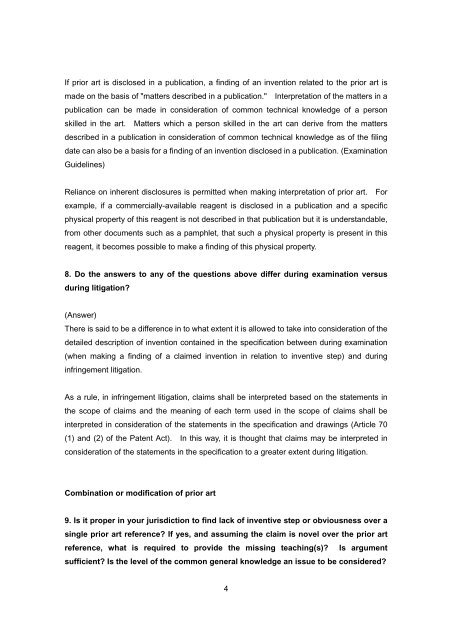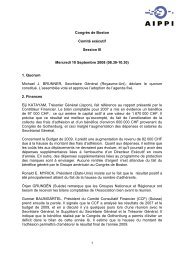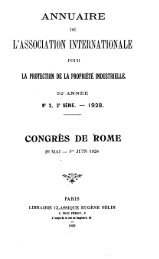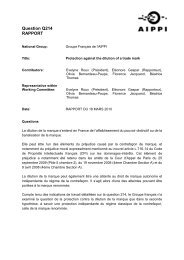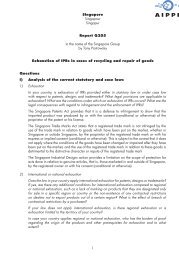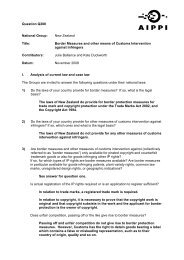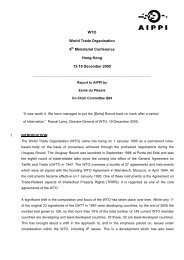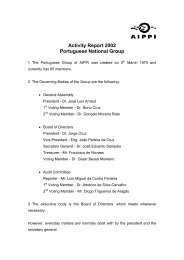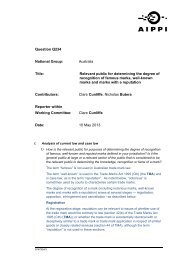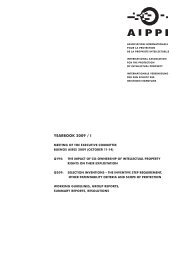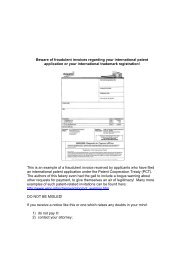Question Q217 - AIPPI
Question Q217 - AIPPI
Question Q217 - AIPPI
You also want an ePaper? Increase the reach of your titles
YUMPU automatically turns print PDFs into web optimized ePapers that Google loves.
If prior art is disclosed in a publication, a finding of an invention related to the prior art is<br />
made on the basis of "matters described in a publication." Interpretation of the matters in a<br />
publication can be made in consideration of common technical knowledge of a person<br />
skilled in the art. Matters which a person skilled in the art can derive from the matters<br />
described in a publication in consideration of common technical knowledge as of the filing<br />
date can also be a basis for a finding of an invention disclosed in a publication. (Examination<br />
Guidelines)<br />
Reliance on inherent disclosures is permitted when making interpretation of prior art. For<br />
example, if a commercially-available reagent is disclosed in a publication and a specific<br />
physical property of this reagent is not described in that publication but it is understandable,<br />
from other documents such as a pamphlet, that such a physical property is present in this<br />
reagent, it becomes possible to make a finding of this physical property.<br />
8. Do the answers to any of the questions above differ during examination versus<br />
during litigation?<br />
(Answer)<br />
There is said to be a difference in to what extent it is allowed to take into consideration of the<br />
detailed description of invention contained in the specification between during examination<br />
(when making a finding of a claimed invention in relation to inventive step) and during<br />
infringement litigation.<br />
As a rule, in infringement litigation, claims shall be interpreted based on the statements in<br />
the scope of claims and the meaning of each term used in the scope of claims shall be<br />
interpreted in consideration of the statements in the specification and drawings (Article 70<br />
(1) and (2) of the Patent Act). In this way, it is thought that claims may be interpreted in<br />
consideration of the statements in the specification to a greater extent during litigation.<br />
Combination or modification of prior art<br />
9. Is it proper in your jurisdiction to find lack of inventive step or obviousness over a<br />
single prior art reference? If yes, and assuming the claim is novel over the prior art<br />
reference, what is required to provide the missing teaching(s)? Is argument<br />
sufficient? Is the level of the common general knowledge an issue to be considered?<br />
4


